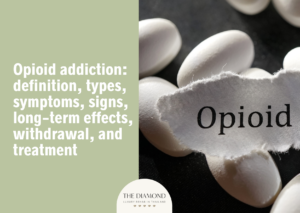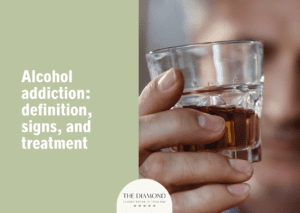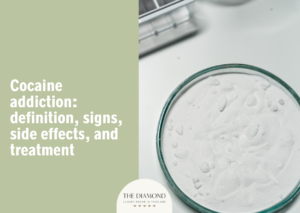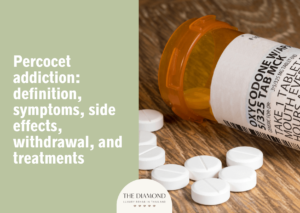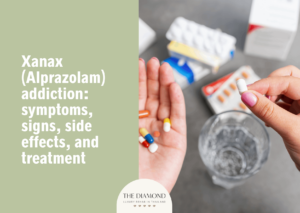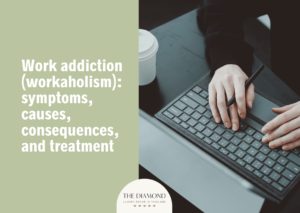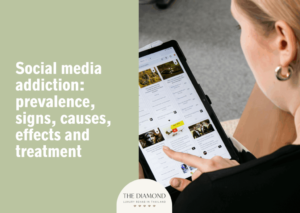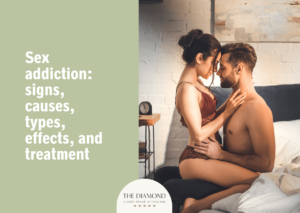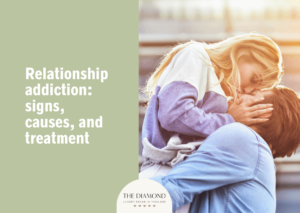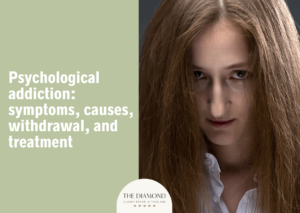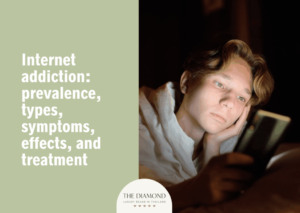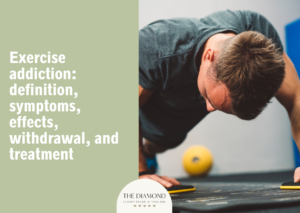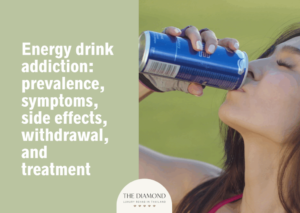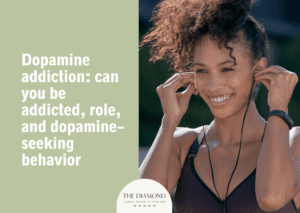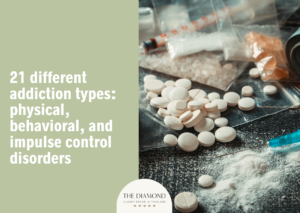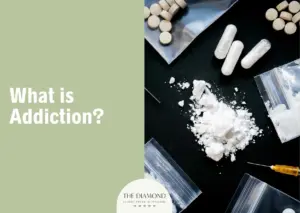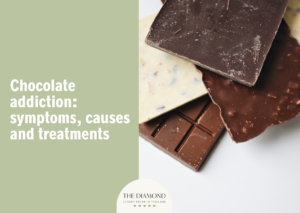Pornography addiction: signs, causes, effects, and treatment

Pornography addiction involves compulsive consumption of explicit sexual material, disrupting emotional health, relationships and daily responsibilities. Persistent exposure alters brain reward pathways, driving continued use despite harmful consequences.
The signs of pornography addiction include increasing preoccupation with pornography, unsuccessful attempts to stop or reduce usage, feeling loss of control over usage, lack of interest in sex, sexual dysfunction, irritability, financial difficulties, experiencing withdrawal symptoms when not watching porn and repeated cycles of stimulation and guilt.
The causes of porn addiction are brain chemistry imbalance, psychological factors, early exposure to pornography, lack of healthy sexual education, social and cultural influences and history of physical or sexual abuse.
The effects of porn addiction are mental health issues, distorted perceptions of sex and relationships, sexual dysfunction, relationship strain, social isolation and desensitization.
Treatment options for pornography addiction include cognitive behavioral therapy (CBT), support groups, acceptance and commitment therapy (ACT), medication, couples therapy and holistic approach.
What is pornography (porn) addiction?
Pornography addiction refers to an excessive urge to watch porn, leading to emotional distress and a loss of control over viewing habits. Individuals spend large amounts of time engaging with explicit content despite knowing the negative effects on relationships, work and mental health.
Many begin watching casually but gradually develop a stronger dependence as the brain seeks the same level of stimulation. Tolerance develops, pushing individuals to explore more extreme material or different genres within the sub-category of sex addiction.
Experts consider pornography addiction a form of behavioral addiction because the disorder activates similar pleasure and reward centers in the brain as substances do. The repeated release of dopamine reinforces the cycle of craving and temporary satisfaction.
Why is pornography addictive?

Pornography is addictive because it overstimulates the brain’s pleasure system, creating powerful associations between sexual imagery and arousal. Each viewing session delivers intense sensory stimulation, conditioning the mind to seek repeated exposure.
The anticipation and excitement trigger a strong reward response, reinforcing the urge to continue watching. The brain then adapts to constant stimulation and demands more explicit material to achieve the same level of pleasure.
The surge of dopamine during consumption fuels the cycle, linking pleasure with watching porn and making self-control increasingly difficult. As the neural pathways strengthen, natural sources of joy begin to feel less rewarding. Emotional regulation and focus decline while cravings dominate thought patterns.
According to a 2022 article by Aishwariya Jha and Debanjan Banerjee titled “Neurobiology of Sex and Pornography Addictions: A Primer,” researchers using functional magnetic resonance imaging (fMRI) observed similar brain activity in cocaine users exposed to drug-related visuals and later to erotic images. The addictive response and neuroplastic adaptations linked to sexual stimuli intensify with the constant novelty and accessibility of graphic imagery online.
How common is porn addiction?
Porn addiction is common, affecting an estimated 3% to 6% of individuals, according to a 2019 paper by de Alarcón et al., titled “Online Porn Addiction: What We Know and What We Don’t—A Systematic Review.”
The authors noted difficulty in determining exact figures due to the absence of a clear diagnostic definition, social stigma surrounding the topic, and inconsistent research methods.
In a 2024 paper by Pouralijan et al., titled “Pornography use, demographic and sexual health characteristics among university students: a gender-based comparative study of non-users, non-problematic users, and problematic users,” 39.6% of university students—51.7% of men and 33.6% of women—reported viewing pornography. Within the group, 9.5% displayed problematic use, including 5.6% of women and 17.4% of men.
Why is porn addiction bad?
Porn addiction is bad because it disrupts relationships, weakens intimacy, hinders communication, harms mental health and interferes with daily functioning. Excessive viewing creates unrealistic sexual expectations, making genuine emotional connection difficult.
Individuals tend to withdraw from partners, replacing real interaction with fantasy. The detachment erodes trust and closeness, leaving both partners feeling isolated. Such consequences occur because repeated exposure to pornography alters brain chemistry and receptiveness.
The overstimulation from explicit content floods the brain with pleasure signals, training it to crave instant gratification instead of meaningful connection.
What are the signs of porn addiction?

Signs of porn addiction are the indicators demonstrating an individual is experiencing a compulsive reliance on pornography. The signs of porn addiction are listed below.
- Increasing preoccupation with pornography: An individual experiencing porn addiction spends a significant portion of each day thinking about graphic content or planning the next opportunity to watch. Attention to responsibilities, relationships and self-care fades as sexual imagery dominates the mind. Mental fixation gradually replaces healthier interests and priorities, leading to difficulty focusing on normal tasks.
- Unsuccessful attempts to stop or reduce usage: Numerous people recognize the harm caused yet repeatedly fail to control the behavior despite strong intentions. Each relapse fuels frustration and self-blame, weakening motivation to try again. The drive overpowers reason, making moderation nearly impossible without structured help.
- Feeling loss of control over usage: Viewing habits begin to feel stronger than willpower, as if the behavior dictates choices instead of conscious decision. Efforts to limit time spent online fail despite awareness of the harm. The urge to engage becomes impulsive, overriding personal boundaries. As per a 2023 study by Michal Privara and Petr Bob called “Pornography Consumption and Cognitive-Affective Distress,” recent studies on pornography addiction reveal how wider Internet access, combined with anonymity and privacy, has greatly increased consumption, particularly among men. Greater accessibility contributes to diminished self-control and heightens the likelihood of compulsive pornography use and related addictive patterns.
- Lack of interest in sex: Regular exposure to artificial stimulation dulls excitement for genuine intimacy. Real partners feel less appealing compared to the exaggerated scenarios in pornography. Affection loses importance as fantasy becomes the preferred escape. Disconnection undermines satisfaction within relationships, fostering loneliness and alienation.
- Sexual dysfunction: Porn addiction leads to various forms of sexual dysfunction, including erectile dysfunction or difficulty achieving orgasm during real-life sexual encounters. In a 2023 study by Sophia Hanseder and Jaya A.R. Dantas titled “Males’ Lived Experience with Self-Perceived Pornography Addiction: A Qualitative Study of Problematic Porn Use,” except for one, every participant experienced porn-induced erectile dysfunction. Interviewees confirmed a causal link between pornography use and sexual dysfunction, noting erections failed whenever porn was absent during sex or masturbation. Those who maintained abstinence for a significant period regained normal erectile function.
- Irritability: Individuals addicted to pornography experience increased irritability, particularly when unable to access or consume pornographic material. Irritability manifests as mood swings, anger or frustration, often triggered by the stress of trying to resist the urge to watch porn. The addiction leads to a shorter temper in everyday situations, as the person becomes more reliant on pornography as a coping mechanism.
- Financial difficulties: Porn addiction leads to financial problems if the individual spends money on subscriptions, premium content, or other explicit materials. The condition additionally causes the person to neglect work or other income-generating activities, resulting in lost earnings. Over time, financial difficulties tend to compound, leading to debt or financial instability.
- Experiencing withdrawal symptoms when not watching porn: Absence of pornography leads to unease, restlessness or irritability as the brain adjusts to reduced stimulation. Cravings emerge, accompanied by low mood or difficulty concentrating. Certain individuals feel emotionally flat or anxious, searching for relief through relapse. Withdrawal symptoms mirror substance withdrawal, revealing how deeply the habit has conditioned neural reward pathways.
- Repeated cycles of stimulation and guilt: Pornography triggers powerful excitement and pleasure at first, followed quickly by crushing regret once the act ends. Each session becomes a predictable loop of brief euphoria and emotional collapse. Feelings of guilt, sadness or shame follow, intensifying self-criticism. Such an emotional whiplash strengthens the compulsion to repeat the behavior as a way to escape discomfort.
How do you know you have porn addiction?

You know you have porn addiction when the impulse to consume sexual content feels out of control, overpowering logic and self-discipline. Hours slip away scrolling through clips or searching for stimulation, while work, relationships and rest begin to suffer.
Pleasure turns hollow, replaced with compulsion and frustration. Attempts to stop usually end in relapse, creating a painful cycle of guilt and shame. Genuine intimacy becomes harder to achieve and fantasy takes precedence over human connection. Certain affected persons notice sexual performance issues or reduced satisfaction during real encounters.
What are the causes of porn addiction?

Causes of porn addiction are any number of variables or underlying issues leading to an individual’s porn dependence becoming pathological. The causes of porn addiction are listed below.
- Brain chemistry imbalance: Repeated exposure to pornographic content overstimulates the brain’s reward circuits, flooding them with pleasure-inducing chemicals. Over time, the mind begins to crave stronger stimulation to achieve the same level of satisfaction. The neurochemical shift disrupts natural motivation and emotional stability. As dependency forms, self-control diminishes, deepening the addictive pattern.
- Psychological factors: Emotional struggles drive individuals to use pornography as a coping mechanism. The temporary escape provides relief but ultimately worsens inner distress. A 2021 paper by Okabe et al., titled “Problematic Pornography Use in Japan: A Preliminary Study Among University Students” revealed 5.7% of participants faced serious daily disruptions from uncontrolled pornography use. Nearly all men (97%) and over a third of women (35.9%) viewed pornography within the previous month. Those struggling to regulate consumption exhibited greater depression, anxiety, and sexual compulsivity, along with reduced self-control compared to users without such difficulties.
- Early exposure to pornography: Encountering porn during formative years distorts perceptions of sexuality and intimacy. According to a 2023 review article by Himani Adarsh and Swapnajeet Sahoo titled “Pornography and Its Impact on Adolescent/Teenage Sexuality,” pornography strongly shapes adolescent sexual development, encouraging earlier sexual activity and riskier behavior. Exposure fosters distorted ideas about sex and body image, promotes substance use and prioritizes physical attraction over emotional closeness. Early exposure additionally heightens vulnerability to sexual aggression, lowers self-worth and contributes to anxiety, depression and addiction.
- Lack of healthy sexual education: A lack of comprehensive sexual education leaves individuals ill-equipped to understand or manage sexual desires in a healthy way. According to a 2023 study by Pathmendra et al., titled “Exposure to Pornography and Adolescent Sexual Behavior: Systematic Review,” in cultures with poor access to sex education, adolescents often turn to pornography for information. Moreover, in countries lacking comprehensive programs, many adopt the sexual scripts shown in such content, viewing those behaviours as normal.
- Social and cultural influences: Societal normalization of pornography and easy digital access make consumption appear harmless. Media portrayal of exaggerated sexuality further fuels curiosity and acceptance. Peer influence and digital trends strengthen the perception of pornography as a typical aspect of modern culture. Gradually, exposure evolves into habitual behavior, diminishing self-awareness and control—highlighting one of the underlying causes of addiction.
- History of physical or sexual abuse: A history of physical or sexual abuse leaves lasting psychological wounds; responses to intimacy frequently become distorted. Survivors end up using pornography to numb painful memories or to regain a sense of control during vulnerable moments. Repeated reliance on adult material establishes unhealthy sexual scripts and encourages avoidance of emotional processing.
What are the risk factors of porn addiction?
The risk factors of porn addiction include escapism, adverse childhood experiences, easy access to online pornography, impulsivity and relationship issues. Escapism serves as a powerful motivator, as individuals use pornography to temporarily avoid emotional pain or dissatisfaction with life.
Adverse experiences such as early sexual exposure or trauma shape attitudes toward intimacy and act as major addiction risk factors, increasing vulnerability to unhealthy coping patterns. Unrestricted online access enables prolonged use, strengthening addictive behaviors through constant stimulation and anonymity.
Individuals with impulsive tendencies, driven to seek instant gratification without weighing potential consequences, show greater likelihood of engaging in problematic pornography use (PPU), as noted in a 2024 paper by Bocci Benucci et al., titled “Pornography use, problematic pornography use, impulsivity, and sensation seeking: a meta-analysis.”
Finally, relationship struggles such as communication barriers and unresolved tension lead individuals to seek pleasure through pornography. What begins as a substitute for connection soon weakens intimacy further, worsening detachment and isolation.
What are the effects of porn addiction?

Effects of porn addiction denote the extensive adverse effects arising from the compulsive and excessive consumption of pornographic material. The effects of porn addiction are listed below.
- Exacerbation of mental health issues: The constant cycle of using pornography, feeling guilt or shame and attempting to quit but relapsing intensifies existing mental health challenges. Most studies reviewed in a 2023 paper by Mehmood Qadri et al., called “Physiological, Psychosocial and Substance Abuse Effects of Pornography Addiction: A Narrative Review” identified psychological effects of pornography, including low mood, depression, poor self-esteem and appetite loss. Individuals with pornographic addiction experience higher rates of anxiety, emotional distress and weakened family bonds.
- Distorted perceptions of sex and relationships: Over time, porn addiction leads to unrealistic expectations about sex, intimacy and relationships. The constant exposure to exaggerated or fictionalized portrayals of sexual activity tends to skew an individual’s understanding of what is normal or healthy in a real-life context. The warped perspective undermines mutual respect and distorts what meaningful intimacy truly represents.
- Sexual dysfunction: Chronic overstimulation dulls natural arousal responses, making real sexual experiences less satisfying. Numerous affected people experience difficulty maintaining desire or achieving climax without visual triggers. As per a 2021 article by Mike Kirby, titled “Pornography and its impact on the sexual health of men,” men with frequent pornography use generally report lower sexual satisfaction. Porn consumption reduces fulfillment due to partners failing to match idealized online portrayals, frustration when partners reject explicit acts, dissatisfaction from unmet novelty expectations and preference for pornography over real intimacy.
- Relationship strain: PPU breeds secrecy, disappointment and resentment within partnerships. The neglected partner frequently feels rejected or inadequate, leading to emotional disconnection. Communication falters as avoidance replaces honesty and openness. In time, the bond weakens, and trust becomes difficult to rebuild.
- Social isolation: Porn addiction leads to social withdrawal, as individuals choose to spend time alone with pornography rather than engaging in social activities or relationships. Interactions with friends and family gradually become non-existent, leaving the person increasingly withdrawn. Shame surrounding the disorder discourages openness or efforts to seek support. Loneliness then reinforces reliance on pornography as a source of comfort and control.
- Desensitization: Repeated exposure to intense imagery reduces sensitivity to ordinary sexual stimuli. Material once stimulating eventually loses its appeal, driving the individual toward increasingly explicit content. Emotional warmth and empathy fade as pleasure becomes disconnected from authentic human intimacy. Such progressive desensitization fosters a stronger detachment from both reality and sincere affection.
How does porn addiction affect the relationship with your partner?
Porn addiction affects the relationship with your partner by weakening emotional intimacy and creating distance. Regular exposure to adult content reshapes expectations, making genuine connection and affection feel less satisfying.
Physical closeness eventually loses meaning as attention shifts toward fantasy rather than shared experiences. Deceit frequently emerges, as individuals conceal habits to avoid conflict or judgment, resulting in growing mistrust.
Secrecy surrounding PPU leads to emotional withdrawal, leaving the partner feeling unwanted or excluded. Communication weakens, and conversations about needs or concerns become strained. Resentment builds as one partner perceives rejection while the other feels shame or guilt. The cycle of hiding, guilt and misunderstanding intensifies the emotional divide.
What are the pornography addiction treatment options?
Pornography addiction treatment options describe the wide variety of strategies employed to assist individuals in overcoming obsession with pornographic media. The most common pornography addiction treatment options are listed below.
- Cognitive behavioral therapy (CBT): CBT assists individuals in identifying harmful thought patterns contributing to compulsive pornography use. Through structured sessions, individuals learn practical strategies to replace unhelpful beliefs with healthier perspectives and coping mechanisms. In a 2022 review by Antons et al., involving 24 studies, titled “Treatments and interventions for compulsive sexual behavior disorder with a focus on problematic pornography use: A preregistered systematic review,” CBT demonstrated the strongest potential for treating compulsive sexual behavior disorder (CSBD) and problematic pornography use (PPU), with components such as psychoeducation, self-regulation training, and cognitive restructuring proving consistently effective.
- Support groups: Peer support communities provide a sense of belonging and accountability throughout one’s recovery journey. Members share experiences, offer empathy and exchange insights about managing cravings and setbacks. Mutual understanding in support groups reduces shame while motivating continued progress. Regular engagement with a group helps strengthen motivation and prevents relapse.
- Acceptance and commitment therapy (ACT): ACT focuses on cultivating psychological flexibility through mindfulness and value-based action. Instead of resisting unwanted urges, patients learn to accept inner experiences without judgment. A 2016 trial by Jesse M. Crosby and Michael P. Twohig titled “Acceptance and Commitment Therapy for Problematic Internet Pornography Use: A Randomized Trial” revealed ACT achieved far greater success in reducing problematic internet pornography use compared to a waitlist control group. Following treatment, 54% of participants in the ACT group reported complete cessation, while 93% reduced consumption by at least 70%. At the three-month follow-up, 35% had fully stopped, and 74% sustained at least a reduction of 70%.
- Medication: In certain cases, medications are used in conjunction with therapy and other interventions to address the root causes of porn addiction, a subset of sexual addiction. A 2020 paper by Yazdi et al., called “Nalmefene in the Treatment of Internet Pornography Addiction – A Case Report and Review of Literature” explored the off-label use of nalmefene, a mu-opioid antagonist approved for alcohol dependence, to address internet pornography addiction in a patient without co-occurring disorders. Marked improvement followed the introduction of nalmefene, with cravings and consumption days dropping significantly within weeks. Findings indicated strong symptom relief and lasting remission, suggesting nalmefene’s potential as an effective adjunct treatment. Though not a complete cure, the medication provides a viable pharmacological option for achieving abstinence in cases free from comorbid conditions.
- Couples therapy: The effects of pornography addiction on a relationship are best addressed through couples therapy, a type of intervention supporting both parties in overcoming the difficulties the condition presents. The therapist works with the couple to help figure out how to get back together emotionally and physically, as well as how to communicate better. Guided discussions help partners express feelings of betrayal, confusion or insecurity in a supportive environment.
- Holistic approach: A holistic approach focuses on treating the entire individual instead of isolating the addiction. The method integrates mindfulness, yoga, nutritional balance and physical activity to restore harmony between mind and body. Emotional healing receives equal emphasis, encouraging self-awareness and resilience through meditation or breathwork. Through fostering inner stability and personal growth, holistic care supports long-term recovery and reduces the likelihood of relapse.
How do you stop porn addiction?

To stop porn addiction, begin by identifying clear reasons for quitting and recording personal motivations as daily reminders. Acknowledging how the habit affects emotional health, relationships or productivity strengthens commitment to change.
Next, remove all forms of access by deleting digital content, clearing browsing histories and installing content filters to reduce temptation. Physical and digital boundaries prevent impulsive relapses during moments of weakness.
Recognizing triggers is equally vital; pay attention to emotions, environments or routines encouraging urges and plan strategies to avoid them. During cravings, redirect energy into constructive ways of letting the temptation out, such as exercise, mindfulness or creative pursuits to shift focus away from the behavior.
Confiding in a trusted person provides much needed emotional support, reducing the isolation fueling relapse. Participation in support groups helps individuals share experiences and learn practical coping strategies from peers.
Professional treatment, including cognitive behavioral therapy, addresses the underlying patterns sustaining addiction. Combining therapy, structured habits and social support restores self-control.
How to help someone with porn addiction?
To help someone with porn addiction, begin by approaching the situation with empathy and patience in place of criticism. Educate yourself about how addiction affects behavior and emotional health to better understand what the person is experiencing.
Initiate a calm, private conversation where honesty feels safe, allowing them to speak openly without fear of shame. Encourage professional support through therapy or counseling, particularly from specialists who address compulsive sexual behavior.
Offer consistent reassurance that recovery is possible and setbacks do not define progress. Avoid monitoring or controlling actions, as trust combined with understanding nurtures genuine motivation for change.
Maintain open communication and check in regularly to remind them they are not facing recovery alone. Reinforce positive steps, no matter how small, to build confidence and resilience.
Is pornography addiction treated in rehab?
Yes, pornography addiction is treated in rehab. Addiction to pornography shares numerous features with substance dependence, including compulsive use and difficulty stopping despite negative consequences.
Treatment focuses on addressing the emotional, behavioral and neurological roots of the compulsion. In rehab, individuals receive structured therapy aimed at regulating impulses and restoring balance to the brain’s reward pathways.
Intensive therapy, including CBT, ACT, group counseling and other porn addiction treatment options are provided to patients in an organized setting. People are able to focus on recovery in a treatment facility, away from the stresses and triggers of everyday life.
How long does it take to recover from porn addiction?

It takes weeks to months to recover from porn addiction, depending on the severity of the habit and commitment to change. Progress varies for each individual, influenced by the duration of use, emotional triggers and underlying psychological issues.
Early improvement begins with reduced cravings and better impulse control as new routines replace compulsive behaviors. Consistent therapy accelerates healing by uncovering root causes and reshaping thought patterns linked to pornography use. Relapses are likely to occur, but they are viewed as a part of pornography addiction recovery and as opportunities to develop character.
Among 104 journals in a 2021 study by Fernandez et al., titled “The Pornography “Rebooting” Experience: A Qualitative Analysis of Abstinence Journals on an Online Pornography Abstinence Forum,” most abstinence attempts lasted between seven and 30 days (52%), with a median duration of 36.5 days. The 36.5-day median serves as a descriptive reference illustrating the personal struggles of individuals attempting to abstain from pornography, revealing a one to two-month journey marked by progress and setbacks.
What is the difference between porn addiction and sex addiction?
The difference between porn addiction and sex addiction describes the unique characteristics separating the two conditions, even though both involve harmful patterns linked to sexual activity or content. The differences between porn addiction and sex addiction are listed in the table below.
| Difference Between Porn Addiction and Sex Addiction | ||
| Aspect | Porn Addiction | Sex Addiction |
| Primary focus | Compulsive consumption of pornographic material | Compulsive engagement in real-life sexual activities |
| Behavioral context | Typically involves solitary, visual consumption | Involves physical sexual interactions with one or more people |
| Content | Digital or visual explicit content (videos, images) | Actual sexual behaviors (intercourse, masturbation) |
| Triggers | Access to internet, boredom, stress | Desire for sexual gratification, emotional stress |
| Social impact | Leads to social isolation and relationship strain | Results in risky sexual behavior and relationship issues |
| Common behaviors | Frequent viewing of pornographic material, often at the expense of real-life sexual relationships | Multiple sexual partners, frequent masturbation, use of sexual services or other high-risk sexual activities. |
| Recognition as a diagnosable disorder | Not officially classified as a disorder, though discussions about potential inclusion continue. | Recognized under broader categories like hypersexual disorder, but still debated and not universally accepted in diagnostic manuals. |
Porn addiction and sex addiction share overlapping traits; however, identifying distinct triggers, actions and effects allows for more precise interventions, improving recovery outcomes for individuals facing these complex disorders.


